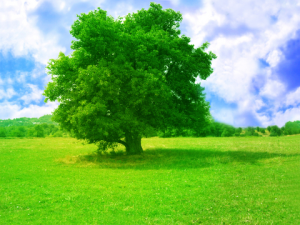Tu B’Shevat Part II – Listening
 Tonight begins the Beginning of the New Year of the Trees, the Jewish holiday called Tu B’Shevat. All around the world an entire culture will pause and turn our attentions to our friends, The Trees, celebrating them by eating their gifts (dates, olives, nuts, etc.), by meditating on all the wonderful lessons they have to teach us (see, for example, Tu B’Shevat Part I), and by passing on to our children this knowledge of their greatness and our blessing to be in such intimate relationship with them.
Tonight begins the Beginning of the New Year of the Trees, the Jewish holiday called Tu B’Shevat. All around the world an entire culture will pause and turn our attentions to our friends, The Trees, celebrating them by eating their gifts (dates, olives, nuts, etc.), by meditating on all the wonderful lessons they have to teach us (see, for example, Tu B’Shevat Part I), and by passing on to our children this knowledge of their greatness and our blessing to be in such intimate relationship with them.
Trees mean many things to us, and we have always been deeply connected to them. They are the first plant-being we are told that we relate to. And that first relationship got off to a bad start.
In the story of the Garden we eat of the fruit of the fig (the Tree of the Knowledge of Good and Evil). This leads to us being cast out of the Garden. The problem was not that we ate of the tree – the problem was that we took the fruit before it was ripe. We took, instead of receiving. In other words, we stepped OUT of connection. So the story can be understood that we stepped out of connection, first, which inherently means we are on the Other Side of the garden, with a wall between us. No wonder that God’s first question to us after we ate of the fig was “Where are you?”, not “what have you done”.
Where are we in our relationship with nature today? Are we in connection, or is there a wall between us and It? Are we taking before receiving, or are we walking with it, in communion?
The ancient Jewish court, the Sanhedrin, was composed of 71 sages. Sages. One of the requirements to be a member was that one could speak the languages of the trees, the rocks, the animals, the grasses, and all creation (1). For, how can we possibly create laws of behavior for our lives without taking them into context and how our lives might affect them?
All of us have the ability to connect with nature. The ancient rabbis taught that “All the trees converse with one another and with all living beings” (2). We can do this simply by closing our eyes, getting out of the way of ourselves (e.g. stilling our thoughts), and LISTENING. Yes, listening! In order to communicate we first have to listen. It is only by listening that we will know if the fruit is ripe – if the tree is ready to give – or not.
Here are two links to help you step move back into a connecting place, to step across the wall separating you from the Great Garden of Nature. The first is a documentary of Juliette de Bairacli Levy, mother of the herbal movement in the US. The second, a conversation with animal communicator Anna Breytenbach. Both have lessons, ways, and even meditations to directly communicate with trees, plants, grasses, even animals – all of nature.
As you move through tonight and tomorrow, at this very special time of celebrating our friends the Trees, can you find in your own life a tree that attracts you, and appreciate it by listening to what it has to say? Can you re-discover your own connecting?
1. Rabbi Shlomo of Karlin, as told in Martin Buber’s Tales of the Hasidim, Vol 1, p. 275, cited from Gershon Winkler’s Daily Kabbalah: Wisdom from the Tree of Life, p. 83.
2. Midrash B’reishis Rabbah 13:2, cited from Gershon Winkler’s Daily Kabbalah: Wisdom from the Tree of Life, p.75.